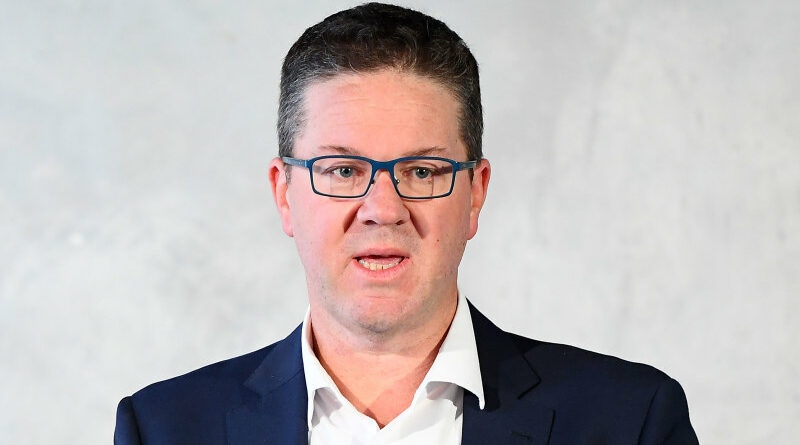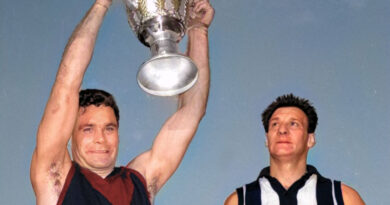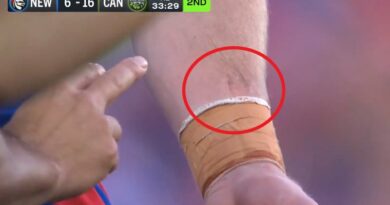How AFL players’ union resolved its differences with its women players
Save articles for later
Add articles to your saved list and come back to them any time.
AFL Players Association boss Paul Marsh admits he had to get his own house in order before achieving the most complicated collective bargaining agreement in the game’s history.
Having brought together Australian football’s elite men and women for the first time in a complex $2.2 billion, five-year pay deal, Marsh said he was forced to put his hand up four years ago when the players’ association’s uneasy relationship with key AFLW players threatened to reach breaking point.
Carlton, St Kilda, Geelong and Greater Western Sydney – led by Darcy Vescio, Cat Phillips, Meg McDonald and Pepa Randall – initially had rejected the AFLW’s new CBA in a move that threatened to derail the 2020 season as the fledgling competition considered splitting with the AFLPA to form its own union.
Gender workplace advocate Prue Gilbert quit the AFLPA’s women football advisory group, saying the union had failed over four years to provide a level playing field for the women’s competition.
While an agreement was eventually reached, the lingering bad blood resulted in Marsh to move to review the players’ association and its relationship with the women’s competition. The research project was overseen by consumer psychologist Anna Box and her findings transformed the players’ union.
“We realised we needed to take stock,” said Marsh of Box’s findings. “The piece of work we did spoke to a lot of our players and we learned what we weren’t delivering on and probably revealed a lack of communication.
“If you’re going to run a body that represents AFLW players and genuinely to be representing them we needed to ask ourselves: ‘How do we resolve this?’ We developed a vision to change.”
Marsh said the women players needed to be treated differently from the men for a raft of historic and potentially gender-specific reasons. “With the men, there’s an inherent trust built up over years,” he said.
“We were treating both groups equally, but the women wanted a higher level of detail. Whether that’s an inherent trait we needed to tailor our communication.”
The results of the project – Box was later recruited by the AFL to study the roles of women in football departments across the 18 clubs – led to Marsh finally appointing Julia Chiera 12 months ago as the players’ association’s head of AFLW. And three AFLW players, including Phillips, were added to his board.
While the historic pay deal will also be remembered as Gillon McLachlan’s last major deal as CEO, its major significance lies also in Marsh’s ability to bring together two vastly different playing groups pushing for vastly different outcomes.
Only weeks ago he hinted at industrial action while also working to appease male players growing frustrated with the AFLW’s insistence upon holding out for more games and the best deal possible. This in an environment where several powerful club bosses around the county had continually pushed against a joint deal in the first place.
A reported 99.2 per cent of AFLW players ultimately voted for the deal, which has guaranteed them two extra games in 2025 and potentially 14 by the end of the agreement, depending on broadcast ratings. And it almost doubles the average wage over the life of the agreement.
Frustrated at not having achieved 17 home-and-away games by 2027, a level of disenchantment lingers among the players, but the prevailing view is that Marsh and his lieutenant Brett Murphy fought valiantly for their increased annual fixture.
The disenchantment has been largely levelled at AFL headquarters, although Laura Kane’s appointment has already improved those relations.
In 2019 Patrick Dangerfield chaired a players’ board that included just one AFLW player, which proved divisive when the women’s CBA was initially rejected. Now the split is 50-50.
By all reports there was occasional tension too in the corridors of the Cattery, around the time Geelong’s AFLW players overwhelmingly rejected the original CBA proposal put to them by Marsh.
Dangerfield agreed with Marsh’s assessment that the AFLW players had rightly demanded more detailed explanations of what they were being asked to accept.
“The players’ association was well-known to the men,” said Dangerfield, “and it had a track record of delivering. That wasn’t the case with the women. We needed to break down those barriers and build that trust.
“I think that’s been an integral part of this deal. Without that solid build-up of trust you don’t get the uplift we’ve seen from where AFLW was to where it is now. We know there’s more to be done, but I honestly don’t think this deal could have been pushed any further.”
Keep up to date with the best AFL coverage in the country. Sign up for the Real Footy newsletter.
Most Viewed in Sport
From our partners
Source: Read Full Article



